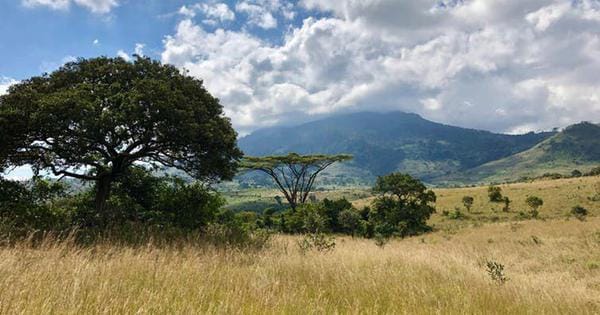Have you ever marveled at the sweeping grasslands that seem to stretch on forever, with not a tree in sight? If so, you’ve probably wondered why these landscapes are so remarkably devoid of trees. This article will uncover the intriguing reasons behind the treeless nature of grasslands, exploring the interplay of climate, plant life, and animal adaptations that have crafted these unique ecosystems.
What Defines a Grassland Ecosystem?
Grassland ecosystems, characterized by the dominance of grasses, are transitional landscapes between forests and deserts. They are shaped by various factors, including climate, precipitation, fire, and grazing by herbivores, which contribute to the presence of grasses and the absence of trees. These ecosystems support a wide range of plant and animal species adapted to the open, grassy environment. Their root systems enhance soil stability and prevent erosion.
Let’s take a closer look at why trees are generally absent in these environments.
Why Are Trees Absent From Grasslands?
Picture a grassland in your mind – you likely envision a sea of grasses, wildflowers swaying in the breeze, and not a tree in sight. This isn’t just by chance. A delicate balance of factors discourages trees from taking root, allowing grasses and other low-lying plants to flourish.
- Not Enough Rain: Grasslands often exist in areas with a “Goldilocks” situation regarding rain. There’s enough for grasses to thrive, but not quite enough to support the thirstier needs of most trees. Grasses, with their incredible resilience, can handle these drier spells much better.
- Wildfires: Nature’s Reset Button: Wildfires, a natural and essential part of grassland life, sweep through these ecosystems periodically, preventing trees from establishing a strong foothold. These fires act like a reset button, clearing out dead plant material and enriching the soil. This process favors the quick-growing grasses, which bounce back rapidly after a fire.
- Hungry Herbivores: Imagine a herd of bison or gazelles moving across the plains – their grazing plays a crucial role in preventing trees from taking over. By munching on young saplings, these herbivores help maintain the open spaces that grasses love, acting as natural lawnmowers.
Some scientists believe that these factors, working together over a long period, have shaped grasslands into the unique ecosystems we know today. Of course, there’s always more to learn. Researchers are constantly studying how climate change and other factors might influence grasslands in the future. Could we one day see trees taking root where only grasses once thrived? It’s a possibility, and it highlights the ever-evolving nature of our planet’s ecosystems.
Adaptations of Flora and Fauna in Treeless Grasslands
Life finds a way, as they say, and in the treeless expanse of grasslands, plants and animals have developed incredible adaptations to not only survive but thrive.
Plants That Take Root:
Grassland plants are masters of resilience. Grasses themselves have evolved to withstand constant grazing and the scorching heat of wildfires. Their extensive root systems, often spreading deep and wide, act like anchors in the soil, helping them access precious water and nutrients. Even wildflowers and shrubs have found ways to adapt, developing features that allow them to flourish in this challenging environment.
Animals Built for Open Spaces:
Without trees to provide cover, grassland animals have developed their own survival strategies. Grazing herbivores, such as swift antelopes and mighty bison, have evolved to roam vast distances in search of food and water, their bodies built for speed and endurance. Meanwhile, predators like wolves and cheetahs have adapted to chase down their prey across the open plains, relying on keen eyesight and impressive speed.
Discover the diverse species that thrive in the savannah, from majestic lions and graceful impalas to tiny chameleons and scurrying squirrels. Learn more about flora and fauna savannah.
The Ecological Significance of Grasslands
Grasslands, far from being empty spaces, are teeming with life and play a vital role in the health of our planet. They offer an array of ecological benefits:
- Hotspots of Biodiversity: Grasslands are like vibrant tapestries of life, supporting a fascinating array of plant and animal species. From tiny insects to soaring birds of prey, these ecosystems provide a home to creatures large and small, many specifically adapted to the unique challenges and opportunities of grassland life.
- Guardians of the Soil: The dense root systems of grasses act like a protective net for the soil, holding it in place and preventing erosion. This is crucial in maintaining the health of these ecosystems and preventing the loss of fertile topsoil, which is essential for plant growth.
- Nature’s Water Filters: Grasslands act like giant sponges, absorbing rainfall and filtering it as it seeps into the ground. This helps replenish groundwater sources and ensures that the water that flows through these landscapes is cleaner.
- Carbon Capture Experts: In the fight against climate change, grasslands are unsung heroes. Grasses are incredibly efficient at absorbing carbon dioxide from the atmosphere and storing it in the soil. This natural carbon capture helps mitigate the impacts of greenhouse gas emissions.
Uncover fascinating insights about the savannah, including its unique plant life, diverse animal adaptations, and intriguing ecological relationships. Explore fun facts about the savanna to broaden your knowledge.
Threats to Grassland Ecosystems and Conservation Efforts
Despite their importance, grasslands around the world face a growing number of threats:
- Habitat Fragmentation: Human activities, from expanding agriculture to urban development, are carving up these once-vast landscapes into smaller, isolated fragments. This makes it difficult for animals to move freely in search of food and mates, putting populations at risk.
- The Invasion of Alien Species: Non-native plants and animals, introduced either intentionally or accidentally, can wreak havoc on grassland ecosystems. These invaders often outcompete native species for resources, disrupting the delicate balance of these environments.
- The Growing Shadow of Climate Change: As global temperatures rise and precipitation patterns shift, grasslands are feeling the heat. These changes can lead to more frequent and intense droughts, making it harder for plants to survive and increasing the risk of wildfires.
Thankfully, people are working hard to protect and restore these vital ecosystems:
- Shielding Land from Development: Governments and conservation organizations are stepping up to protect existing grasslands by establishing reserves and parks. These safe havens provide a refuge for wildlife and help preserve the ecological integrity of these landscapes.
- Promoting Sustainable Grazing: By implementing practices that mimic the natural grazing patterns of herbivores, ranchers can help maintain the health and biodiversity of grasslands. This involves carefully managing livestock numbers and rotating grazing areas to prevent overgrazing.
- Breathing Life Back into Degraded Lands: Efforts are underway around the world to restore degraded grasslands and reconnect fragmented habitats. This often involves reintroducing native plant species, controlling invasive species, and implementing measures to prevent further degradation.
Gain essential knowledge about the savannah, including its geographical distribution, climate patterns, and the threats facing its fragile ecosystem. Delve into savanna important facts to deepen your understanding.
Conclusion
Grasslands, often overlooked, are in fact vibrant ecosystems teeming with life and essential for a healthy planet. From their role in supporting biodiversity and mitigating climate change to their ability to filter water and prevent soil erosion, these often-underappreciated landscapes deserve our attention and protection. While they face a growing number of threats, ongoing conservation efforts offer hope for the future of these vital ecosystems.
- China II Review: Delicious Food & Speedy Service - April 17, 2025
- Understand Virginia’s Flag: History & Debate - April 17, 2025
- Explore Long Island’s Map: Unique Regions & Insights - April 17, 2025
















